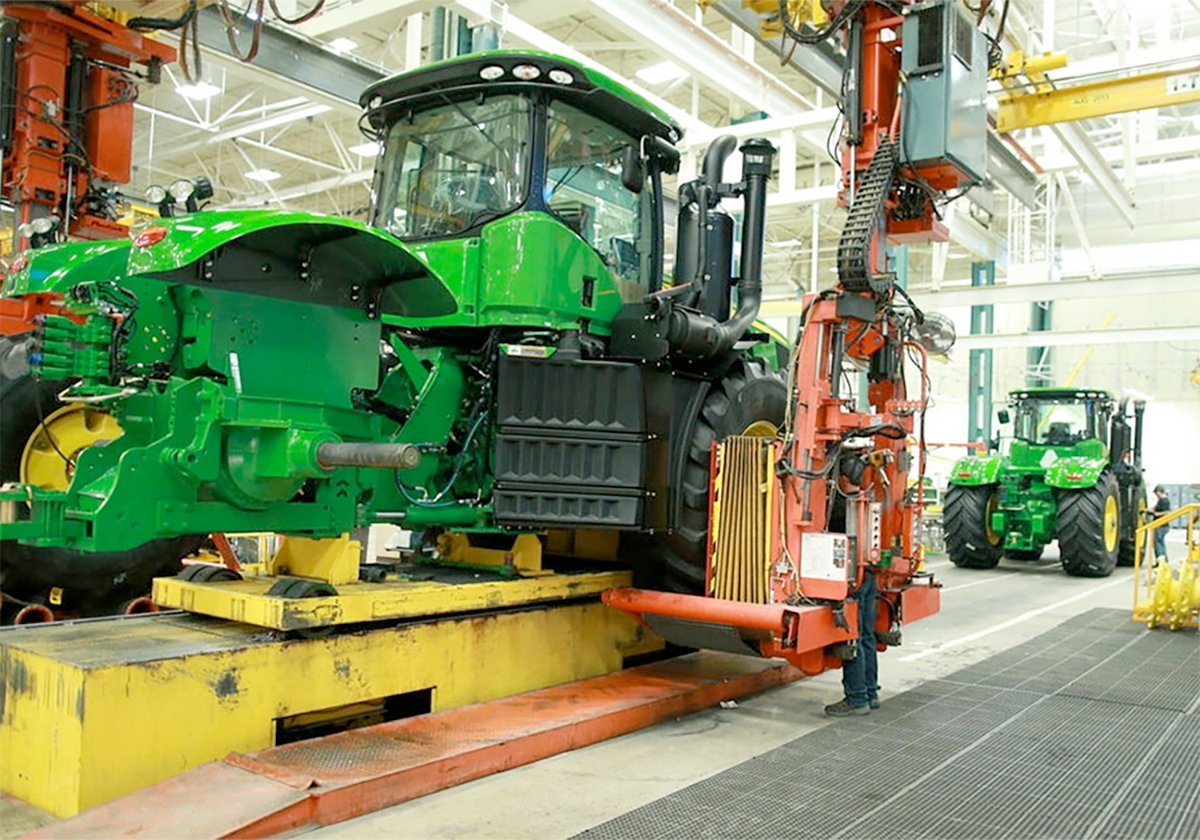It’s Black Friday, and thousands of Manitobans have flocked south to Grand Forks and Fargo, North Dakota, to be part of the madding crowds seeking deals at big box stores down south of the line. The Tobans will probably get most of the deals because all the Yanks they’re competing with will still be stuffed with turkey from yesterday’s Thanksgiving dinner and stupefied by digestive difficulties, allowing the Tobans to vault over their heads and down the aisles first.
Funny name, isn’t it, for a day of retail joy: Black Friday. But this is, of course, as TV news has told us 48,000 times already this year, a term that comes from the fact that most U.S. retailers don’t start making their annual profit margin until today, so however they do from here until December 31 determines how well they did this year, how much black ink will be on their earnings statements.
Read Also

Trump’s trade policies take their toll on Canadian producers
U.S. trade policy as dictated by president Donald Trump is hurting Canadian farmers in a multitude of ways.
Farmers have a longer period forward before they have to earn all the margin they’re going to get for this year’s crop. But right now, with the crop markets having risen nicely, I’ll bet your outlook is looking blacker in that good Black Friday way. Prices have taken a little setback recently, but they’re still well above what we were looking at during seeding season. Many farmers still have far too much feed wheat in their bins – the product of a bad weather season in many regions – but it was nice to see in yesterday’s Canadian Wheat Board Pool Return Outlook for 2010-11 that CW Feed wheat values actually rose. Most grades of wheat were down a bit, but everyone should have been expecting that after the recent drop in futures markets. Durum was up, as expected.
High basis levels for canola have been annoying farmers who have been hauling a lot of canola to the elevator in order to pay soon-due bills, but the cash price is still good by any historical standards.
Canola has been flying out of Canada this year, and if it wasn’t for that fact, basis levels would be a lot worse. Luckily, the Chinese have a voracious appetite for our canola and canola products, and while seed exports are being held at last-year rates by Chinese port restrictions, oil and meal are pouring off the West Coast to China. Everyone said China couldn’t do without imported oilseeds and it looks like everyone was right.
China seems to be the big factor behind almost everyone’s bullishness – combined with tight stocks of the big crops. Chinese demand, if it continues at its torrid pace, eats down our stockpiles and lets us jack up prices. That’s nice. Last week I spoke to a number of markets folks about China’s growing demand for pretty well everything, and they were all confident that China would keep buying – regardless of recent efforts to snuff out galloping food inflation – and keep paying.
So there’s a lot of bullishness out there under the ag markets right now, regardless of the recent price slump. But that’s where I get cautious. We’re basing so much on an assumption of uninterrupted Chinese demand. How safe an assumption is that demand? Everyone seems to think it’s safe, which is a red flag for me. Whenever everyone thinks anything, everyone tends to be in danger of being really wrong.
That’s why I like contrarian analysis, which looks at the direction everyone’s running and begins wondering if it’s a sign of a likely reversal. The best example of this very simple contrarianism in ag markets analysis recently was a blog post by Darin Newsom of DTN while crop prices were still surging. He noted all the bullish fundamental reasons for the rally, noted everyone was very bullish, and said this made him less bullish in the short term. Too many people were bullish. That was dangerous. It created the possibility for a tipping point of the bullish bucket.
Almost on cue, the markets turned down, and Newsom must have felt rather clever to have posted that rather than to have just thought it to himself. I felt rather chagrined that I hadn’t noted his post in my blog at that time, because my markets editor had forwarded it to me, I thought it was interesting and worthy of noting, but got busy doing something else and didn’t write about it. So now I’m doing it well after the fact, apparently hindsightfully.
Anyhow, it brings to my mind my queasiness about the comfy assumptions well all have that Chinese government attempts to shrink ag demand to rein-in domestic inflation and be done without hurting our ag exports to the country. And it worries me that everyone seems to assume the Chinese will be able to do what we almost never can do: cool down their economy without causing a serious recession.
There are no signs of a Chinese recession. But what would happen to our exports and prices if China fell into something ugly like our American neighbors are dealing with? How much of our assumptions of Chinese demand are based on our belief that they’re most unlikely to ever cut back on their per capita food consumption?
I hate to be the dark one on Black Friday, with Christmas cheer already in the air, but perhaps it’s time for farmers to look at how much black ink is lying out there in forward prices and what they can do to make sure it doesn’t seep away if some of our bullish assumptions aren’t proven right.















